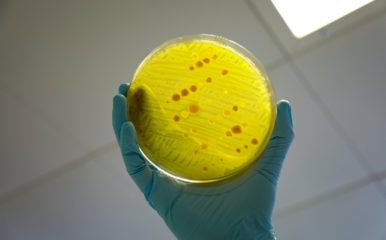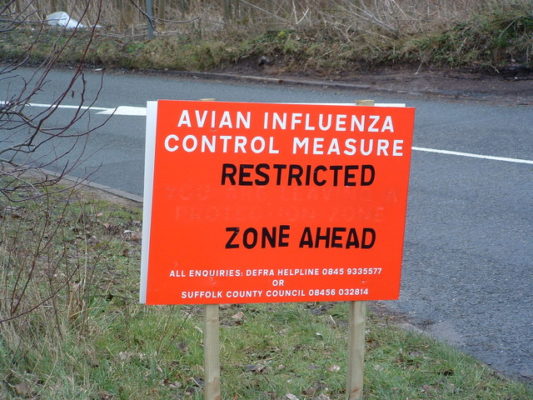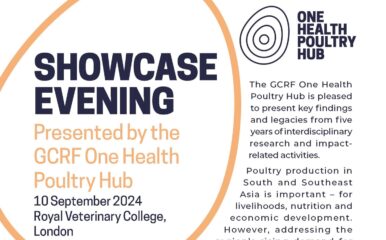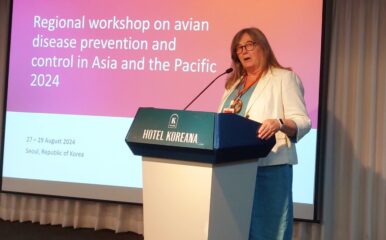
Outbreaks across Europe highlight need for continued vigilance against bird flu
Published on 13/11/2020

Keith Evans
View this page in:
VietnameseResearchers in the One Health Poultry Hub are readying themselves for further avian influenza outbreaks in the flocks they study in Asia following the detection of both low and novel high-pathogenic avian influenza (HPAI) viruses in wild birds and poultry in Europe and Central Asia.
These HPAI viruses are causing significant outbreaks in poultry and wild bird die-off. However, to date, the particular H5 2.3.4.4b clade viruses involved have not been associated with zoonotic infections, i.e. transmission to people or other animals.
Dr Christine Middlemiss, UK Chief Veterinary Officer and Chair of the One Health Poultry Hub’s Advisory Board, said the outbreaks demonstrated the importance of research such as the Hub’s. She said:
Following a number of confirmed cases of avian influenza in the UK and mainland Europe, we have raised the risk level for incursion to Great Britain from migratory birds to high. We have also raised the risk level for the disease being introduced to poultry farms in Great Britain to medium.
We have also introduced worked with the devolved administrations [in the UK] to introduce an Avian Influenza Prevention Zone across the country to ensure that we can eradicate the disease as quickly as possible. It is important now more than ever that bird keepers ensure they are doing all they can to maintain and strengthen good biosecurity on their premises to ensure we prevent further outbreaks
These outbreaks demonstrate the vital importance of continued research and surveillance work to prevent new disease outbreaks and protect global poultry populations.
UK-based Hub partners at the OIE/FAO International Reference Laboratory and at the Royal Veterinary College (RVC) have been analysing the emerging viruses in both Europe and in countries in both the Middle East and Central Asia.
Professor Nicola Lewis, Poultry Hub investigator and Deputy Director of the OIE/FAO International Reference Laboratory for avian influenza, swine influenza and Newcastle disease at the Animal and Plant Health Agency (APHA), said:
This HPAI H5N8 virus has been circulating undetected in birds likely since 2019. After its first detection in Iraq in May 2020 it has quickly spread to poultry in the Russian Federation and Kazakhstan, and has now also been detected in many countries in Europe in both wild and domestic birds.
This emergence of another novel H5N8 virus – the third emergent event with these H5 viruses that Eurasia has experienced since 2014/2015 – reminds us that despite SARS-Cov2 (causing COVID-19), bird flu is still a serious threat to both poultry health and to food security in many countries and highlights the need for continuous and effective surveillance in poultry populations worldwide.
Other Hub investigators involved in the surveillance work include Professor Ian Brown and Dr Ash Banyard.
Avian influenza work within the Hub continues. In Bangladesh, Hub investigator Dr Mohammed Samad from the Bangladesh Livestock Research Institute leads the national reference labs for avian influenza. In Vietnam, The Department of Animal Health is implementing the national avian influenza surveillance activities, and the National Institute of Veterinary Research team – led by Hub investigator Dr Bui Nghia Vuong – is participating in various avian influenza surveillance studies.
The team at The Pirbright Institute in the UK, under Hub investigator Professor Munir Iqbal, are analysing antigenic variability and receptor binding to avian and mammalian receptors to access their antigenic variability and potential for zoonotic infections. The team’s latest publication is ‘Adsorptive mutation and N-linked glycosylation modulate influenza virus antigenicity and fitness‘ in Emerging Microbes & Infections.


